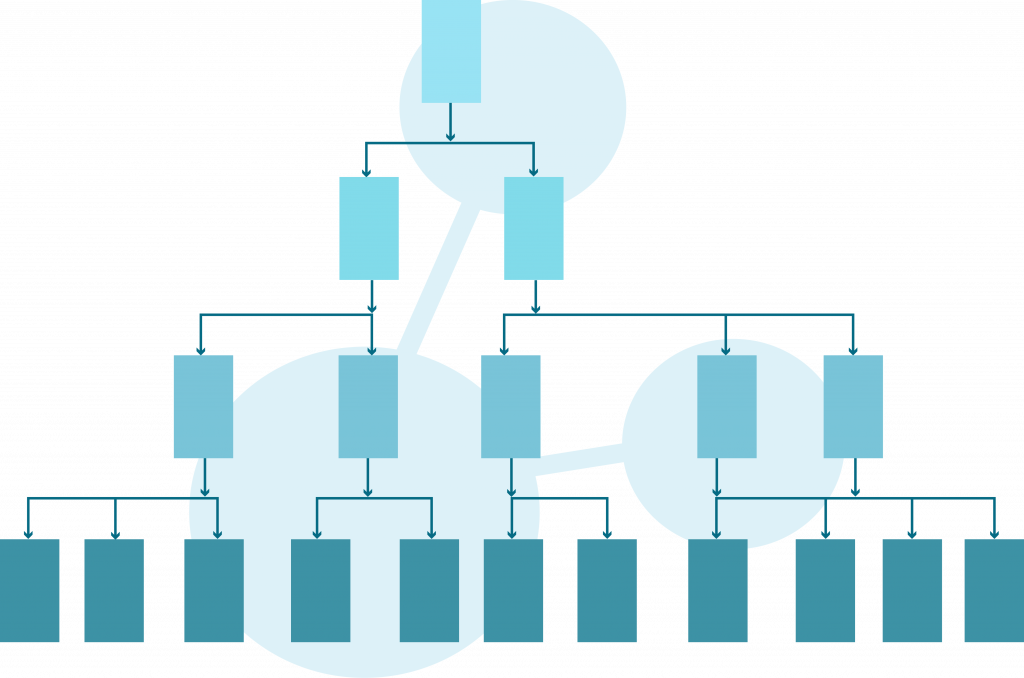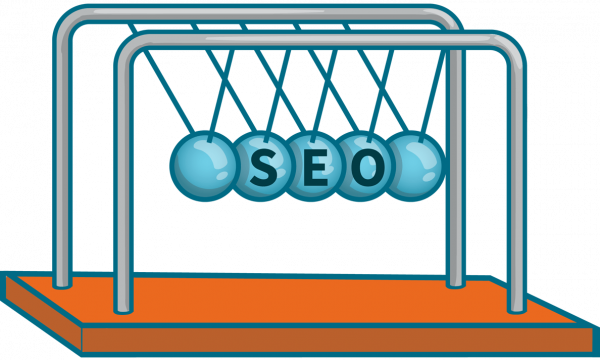Content Silos SEO: 4 Steps to Building A Great Content Strategy

Building a great content strategy is essential with silo-building. It can help you attract new visitors and maybe customers to your website. It is necessary to be creative in organizing your website so that crawlers and visitors won’t get confused and bored with your content.
Siloing your content has gained attraction slowly in these past few years. You might have heard of this term for the first time, but what exactly are content silos SEO? Is it necessary to silo your content?
These are just a few of the questions that web owners want to know as they grow with their journey in search engine optimization. But first, let’s talk about what a Silo in SEO is and how important it is.
What is Siloing in SEO?
For you to rank higher in the search engine for broad, longer, and more specific phrases, your website must have organized supporting details to appear relevant for those terms.
Imagine how those painters organize their paints, paintbrush, and boards. Some painters want to save time in classifying what tools or paint they need. Instead, they stockpile those things for them to easily choose what color they need and spend more time on their painting.
Siloing a website is just like grouping those related pages together. It’s either you establish the site‘s keyword-based concept through linking or structuring. Just like painters use different types of boxes to organize different types of paint colors, web owners must also silo a website to categorize its various content themes and make it easy for the search engine what the website is all about.
Silo in SEO in the concept of organizing a website in a specific order. It’s an effective way of classifying content to help search engines and the visitors of the website. Just like a chapter in a book, a silo represents a group of themed or subject-specific content on your website.
The only reason this grouping has a high SEO priority is that search engines give them keyword relevancy within their index based on their page and the rest of the website with a lot of supporting similar content.

What’s a Silo Structure?
By working hard to create great content with excellent SEO, but still strive to get search engine rankings. However, search engines or visitors will find all of the great content on your website if you don’t use a great website structure.
Why Build Content Silos SEO for your Website?.
Creating a silo structure can help in making your internal linking effective. Each silo will likely link to a similar level, lower page, and to the upper-level page. The topic should have the same category.
Always plan how relevant pages should link to each other, and also include links in your content. Go back to your old content and add links to newer content. You probably need to think ahead with the silo structure.
Benefits of SEO Silos
SEO silo can help you organize the equipment you need according to its purpose. You have the choice of adjusting the needs of your visitors so that search engines can quickly crawl the content. Just like in agriculture, silos job is to organize the type of products and equipment from each other so that the farmers can save time in picking what type of specific item they need.
Your visitor and search engine bots are both lazy and will only visit your site and get what they need. SEO silos can help you with these goals and offer other benefits like:
- User Friendly – Visitors like to find the information they need as soon as possible. Content silos SEO help them do this and increase usage.
- Builds Authority – If you want to make search engines believe that you are an authorized website, then you need to target a specific keyword within a thematic page.
- Search Engine Friendly – It’s easy for the search engine to quickly identify the relevancy of a page to the searcher’s query.
Silos are both SEO marketing and content marketing efforts. To build a profitable content strategy is by creating quality content that provides the needs of your visitors and can easily be found by the search engines.
Links in Siloing: Do They Matter?
Links are critically used within a specific theme section of the site and PageRank. It gets passed between a relatively related page or landing page to support the theme. Siloing your website will enhance the relevancy of your pages for the desired search term.
Your silo strategy will show what the site is all about and help bring you as an expert source for a specific topic. Don’t let it be considered as a deranged mixture that has no keyword focus.
Search engine rewards the top keyword rankings to sites that have clear website structure and subject matter correspondence to match the user’s query. This doesn’t only mean that pages with an exact keyword phrase. Especially when the Panda algorithm was created, it was made to reward quality content.
What are Breadcrumbs and their Benefits in SEO?
Breadcrumbs are website links that let users locate where they are and how far they are from the homepage. They are usually at the top of the website or under the navigation bar. Breadcrumbs are a website navigational element that can be used in creating a better UX and help improve the crawlable. They also encourage users to stay on your website and help them find the information they need.
Improve Your Site’s Structure with a Content Silos SEO
Site structure is essentially important for SEO. Making silos is an efficient way to construct content so that it will make sense for the readers and search engine crawlers. If your site needs to be organized, Internal Link Juicer is the plugin you need. It has provided help to a lot of web owners on their websites and proved to be helpful in many ways possible.

Creating a Silo Strategy
Before you reconstruct your site or content, you should probably know how to build your content.
You should create quality content to prove that you are an industry expert because that’s what Google is looking for. Start consulting your marketing team to know the most effective categories and the sub-categories within them.
For example, at a National Positions, you’re a marketing company that specializes in SEO. Your top 6 content categories are your top 6 services in SEO, video marketing, conversion rate optimization, mobile marketing, social media marketing, and local search marketing. With these categories, you should also create five subcategory pages that will give your readers what they need to know about internet marketing. Google will then allow you an industry authority and give you a first-page ranking.
Do Proper Keyword Research in Your Niche
Everyone familiar with SEO is performing keyword research and is using the most popular search condition. Nowadays, it’s not enough anymore. It’s essential to improve that together with your content. Way before, you can use your top keywords a lot of time on your homepage and get a high rank.
That doesn’t apply now because nowadays you need to find out your top 3 keywords and the keywords that are related to them. Therefore, you will have a bunch of keywords to optimize. In other words, your keywords will coincide with your silos.
Create Virtual and Physical Silos
There are two types of silos. Virtual and physical. Virtual silo’s job is to create a folder of pages that are described by the URL. For instance, all SEO pages are with the same URL category of SEO.
Physical silos are the ones to reconstruct the navigation bar, sidebar, and even footer.
We are suggesting that you make use of both changes. It’s a waste to create a lot of silo content without building the virtual and physical silos to contest. It’s like your making a book with no chapters and sections on it. Just like chapters, tables of contents, and footnotes tell readers where to find all the important info, the virtual and physical silos tell the crawlers where to find the most important info that they are looking for.
Optimize Your Content
If you want to create a blog, you should probably start today. Blogging is another way to attract readers to become customers. If you prefer to rank higher in Google, it’s necessary to create quality and unique content to get more crawlers. Blogging also helps you sway your existing client base to win new customers who are looking for tips and value exchange.
Make sure your content is well organized for the rest of the site if you’re using silos. Most mistakes come from building exquisite silos on your website, only to hide the content on the border of the site. If your blog isn’t linked to pages in your silos and you’re internal link isn’t linked to your blog post, then crawlers won’t give you the credit you deserve.
It is your job to guide the crawlers because they can’t see or hear. Make sure your blog is linked to your homepage and has made categories and sub-categories that correspond with your silos.
Improve Internal Linking Structure
Inbound links coming to your site aren’t the only important ones. As you’ve read above, the crawlers can’t see or hear and needs to be led. Another way to lead them is by linking significant pages and using relevant keywords as the anchor text. To get maximum impact on your silos, you must interlink accurately.
How to interlink accurately? Simple, you just have to interlink all the pages within a silo to one another and that includes the blog post. Never link outside the silo. There should only be one link outside the homepage. In other words, all the capability of the silo is in support of the homepage, which can be the most important page on the website.
If you link outside the silos, you might confuse the crawlers and possibly lose impacts. Always remember to link in the body of the content and the upper text as much as possible.

Do’s and Don’ts of Building SEO Silos
- Do Build Top-Level Landing Pages
It’s necessary to do a Top-Level Landing Page because this landing page is essential for the function of your silo. Silos will be headed by each landing page so that it will fall to other content.
Other websites determine the underlying themes that define your website to be relatively simple. Concluding on what high-level landing page seems relatively genuine. Other sites dividing their sites into a more definite category may be tricky.
It’s better to prioritize both the finding keyword research and current to help you conclude. Determining whether your site is exactly covering and the related keywords can help you identify opportunities that you might need on your content.
- Do Overall Website Content Organization
On your SEO siloing strategy, It is necessary to keep the overall group in your mind. It will be easy to find out sidetracked with complete content and make sure that relevant pages link together
Nonetheless, another risk of silo SEO is that it makes pages too hard to access. It might lead to your visitors getting fewer related pages than your website could offer. This will not only affect your page visit but it will be also difficult for Google to navigate the page against you and might hurt your SEO.
- Do Plan Crosslinks for Pages Within Each Silo
It should be necessary that each page in your silo should link normally to other pages in the silo. Pages need to be linked naturally and follow the ways that people would commonly search for content. Always use anchor text to support your keywords.
Content pages must be organized in a way that they are separated by category. Lower pages should never crosslink to other silo pages. This concept applies to silo creation. If they link to one another, your silos will be messy.
In other words, low-level pages are required to link to other high-level pages. When done correctly, bots and your visitors will be able to navigate from any silo to the top of another silo, from where they can easily navigate down through those topics. This approach dodges the silo dangers of keeping readers and bots from finding relevant content due to not enough crosslinking.
- Don’t Forget to Create Content and Build your Silo
It should be necessary to create high-quality content better than any content that a search engine will likely find. SEO siloing depends on great content than any other SEO approach. Internal linking also depends on content relativity so that readers will want to explore more on your pages.
Never forget to use a correct SEO practice for all of your content to place all your silos at the top of the search result. Creating titles and headlines is a must to have a successful SEO within your silo. The title should always define that page content slightly describe how this page is different from other website content in the silo
It’s necessary for heading to highlight the important topics and subject of the whole content. Having an overly long heading or exaggerated headings that don’t contribute to the structure of the entire content is Google’s hate.
- Don’t Forget to Build Lower Level Pages
It is better if you have at least five or more content pages for each of the silo themes. That also depends on your site, content, and goals, you may end up acquiring extra categories and becoming much more specific on the landing page category.
Don’t forget to consider breaking your content in two if you have too much of it. If you don’t think you have enough resources to fill the whole content then, try looking for options and look for ways on how to put pages into another silo.
- Don’t Neglect the Value of Flat Site Architecture
A deep site architecture website needs 10 clicks to enter a given page, compare this to flat site architecture. It uses another way to ensure that the page on your site will only need at least four clicks. It also applies internal linking and menu categories.
Flat or also known as shallow sites gather more views from the pages that get a lot of backlinks like your homepage, to the pages that may not gain more traffic than the normal product pages.
The search engine is much better when it comes to finding all of the pages on the website when those pages are closely related to a landing page. A flat site is not only for improving the user experience but also for attracting traffic to a lesser-known page to increase the overall benefits of SEO to your site.
Start Building an Excellent and Effective Content Silo!
Site structure, content silos SEO in particular, is extremely essential to SEO and building silos is the most effective way to organize your content. If you don’t know how to organize your website and don’t have any clue on how to make it, then you probably need help. Internal Link Juicer is a plugin that has helped a lot of web owners with their websites.
You might read a lot of articles and blogs on how building a silo can help you gain a lot of customers and even rank your site way higher than what you expect. It’s not impossible to improve your SEO skills and gain more experience and knowledge.






